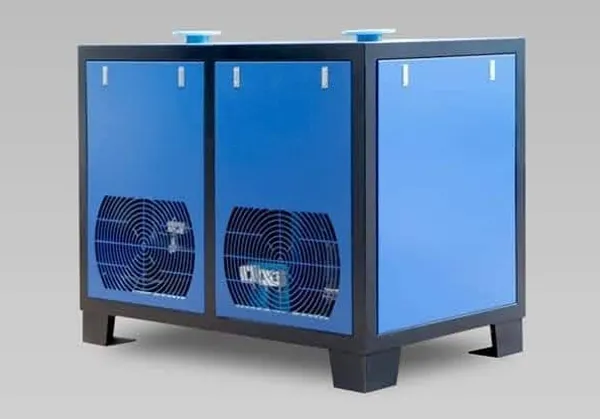1) Compressed Air Inlet: The compressed air enters the desiccant air dryer at a high pressure. This air typically contains moisture (water vapor) that needs to be removed before it can be used for sensitive processes or equipment.
2) Moisture Adsorption:The air passes through one or more towers filled with desiccant material (such as silica gel, activated alumina, or molecular sieves). The desiccant adsorbs (binds) the moisture from the compressed air, effectively drying it.
3) Dry Air Outlet:The dried air is then sent to the downstream equipment or process, where it is used without the risk of moisture causing damage.
4) Regeneration:
i ) The dried air is then sent to the downstream equipment or process, where it is used without the risk of moisture causing damage.
ii) Heatless regeneration: The regeneration process occurs by venting a portion of the dry air to the atmosphere to remove moisture from the desiccant.
iii) Heated regeneration: A separate heating element or a flow of warm air is used to regenerate the desiccant material by driving the moisture out.
5) Cycle Switching: Desiccant air dryers typically operate in a dual-tower system. While one tower is actively drying the air, the other tower is being regenerated. The system automatically switches between the two towers in a continuous cycle, ensuring a steady supply of dry air.
